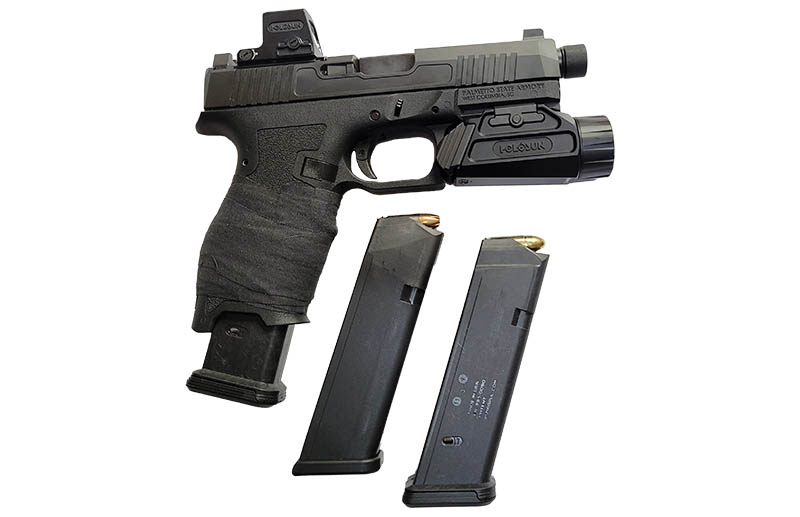
An evaluation of the customized full-size PSA Dagger for home defense.
Glock’s slogan may be “Glock Perfection,” but the extensive availability of aftermarket parts indicates that not everyone agrees. Despite the overall quality of the genuine Austrian-made firearms, many shooters have personal preferences for features that differ from the original design.
When the patent expired on the Gen 3 Glock 17, it opened the floodgates for handguns based on this design. Today, there are numerous clones available, most of which are fundamentally good guns. The challenge lies in deciding which one to choose based on features and prices.
When I finally considered this myself (after being stuck in the metal-frame DA/SA camp for years), a genuine Glock was out of the question. Although I had become more accustomed to the pistol after shooting more of them in recent years, I couldn’t overlook the grip angle or the trigger shoe, which I didn’t find comfortable. Most of the clones available also featured a trigger shoe, except for the PSA Dagger.
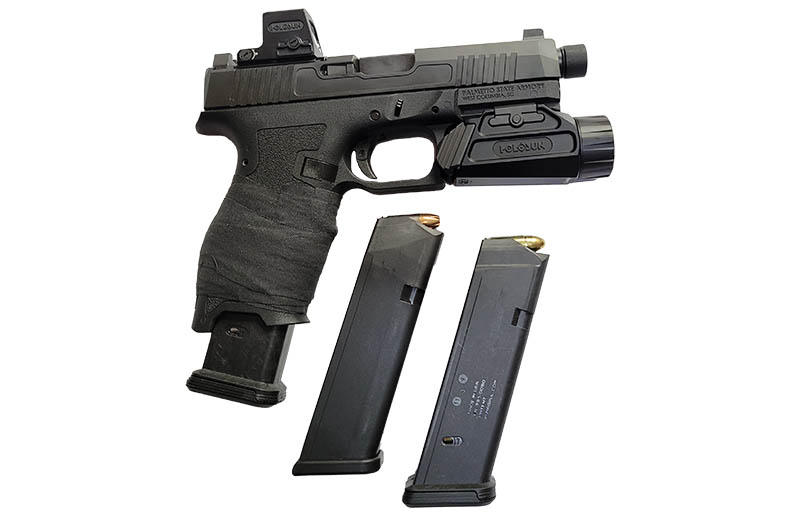
Palmetto State Armory’s take on the concept, featuring a more traditional grip angle and a curved trigger, was appealing to me. With the intention of upgrading my nightstand gun to something more modern, I requested them to send me one.
Initial Thoughts
I started by specifying the exact model of PSA Dagger I chose to review, as the company offers various variations. The pistol was intended for home defense, so I selected the PSA Dagger Full Size-S with an RMR optics-ready slide, Ameriglo lower-third co-witness iron sights, and a threaded barrel. When concealability isn’t a concern, why not opt for a larger size?
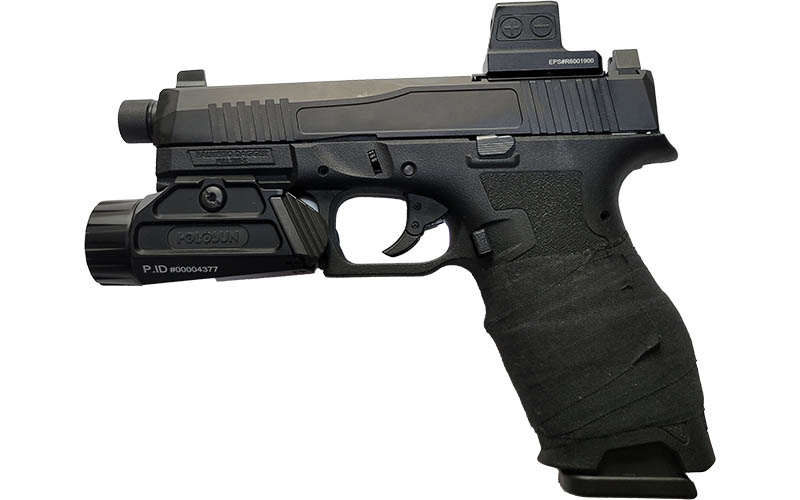
The standard PSA Dagger is considered a compact model, based on the Glock 19. The Dagger Full Size-S is similar to a G19X or G45, retaining the Glock 19-sized barrel and slide but sporting a Glock 17-sized frame.
Within the Dagger lineup, the Full Size-S falls somewhere in the middle of the available options. Some fancier models feature window cuts on the slide, repositioned rear sights, and different colors of barrels, slides, and frames. Additionally, there are plain models that don’t include an optics cut.
PSA includes a soft carrying case with the Dagger, which is a nice addition. It has room to fit the gun, two spare 17-round mags, and a pouch for a suppressor, an extended mag, or any other accessories. My only minor complaint with the case is that the pistol can’t be securely strapped in place after adding a flashlight or optic, but it still works for transporting the gun.
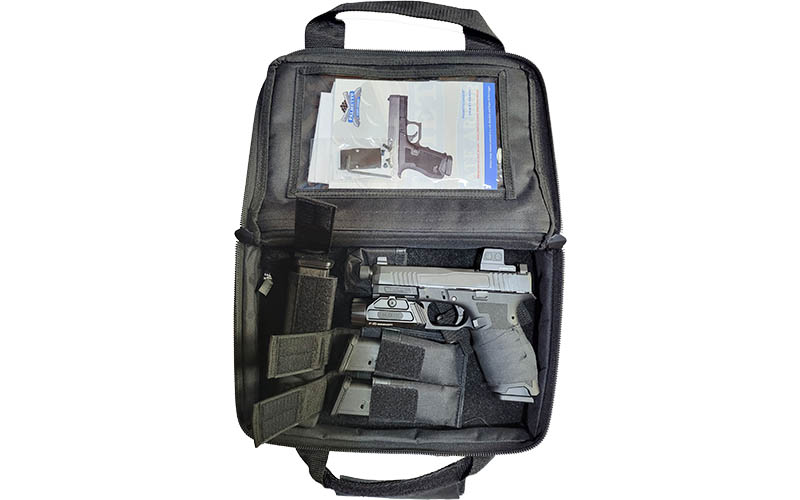
First Experience with the PSA Dagger
For my initial range session, I decided to keep the Dagger completely stock and did not clean or lubricate it out of the box, to assess its performance.
The pistol fired its first 100 rounds without any significant issues, and I was already impressed with its shooting capabilities. The slide release was a bit stiff, and the slide didn’t lock back a few times, but apart from that, it performed flawlessly.
This gave me the confidence to continue testing the dry operation of the PSA Dagger, but I chose to install some accessories before taking it back to the range.
Customizing the Dagger
One of the benefits of Glock-like pistols and modern plastic firearms is the ability to customize them, given the wide range of aftermarket parts available. Having previously owned handguns manufactured before accessory rails were standard, this was an exciting prospect for me.
I used PSA’s included Allen wrench to remove the slide’s optic cover plate and replaced it with a Holosun EPS. The EPS comes with an RMR adaptor plate, allowing it to be used on PSA Daggers with an RMR cut slide. Additionally, I mounted a Holosun P.I.D. light on the Dagger’s rail.
All installations went smoothly.
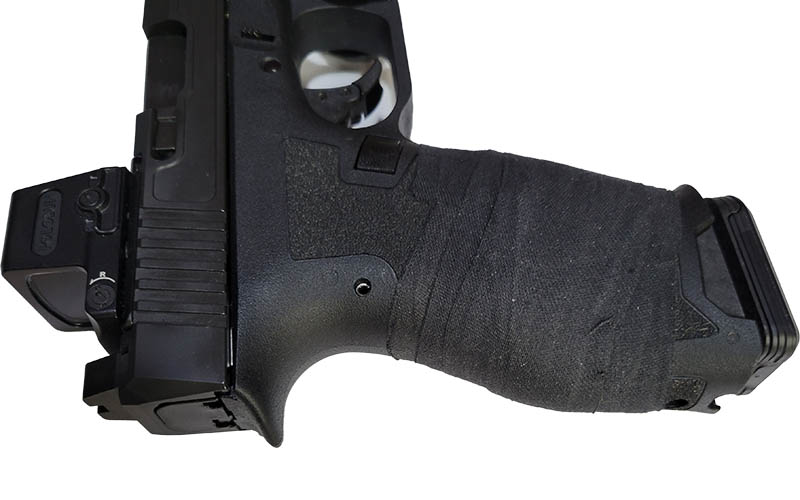
The final modification I made before returning to the range addressed my initial complaint with the PSA Dagger, which was a subjective issue. While I preferred the Dagger’s grip angle over that of the Glock, the back contour of the grip was too sharp for my liking. However, a few layers of grip tape provided the necessary padding, resulting in a much more comfortable handle.
Second Round with the PSA Dagger
After customizing the Dagger, I returned to the range for further testing.

It’s important to note that I still hadn’t lubricated the pistol at this point, and I managed to fire another 200 rounds through it at a rapid pace before encountering any issues. The gun began to exhibit sluggish and unreliable cycling, possibly due to the grease or lube from the factory cooking off as the gun heated up.
After a quick cleaning and lubrication, the Dagger performed flawlessly for another 200 rounds, with the exception of one double-feed with a hollow point. I also monitored the trigger pin throughout the testing, which stayed put throughout approximately 600 rounds.
In summary, the PSA Dagger has proven its reliability. Like any gun, it requires occasional lubrication to maintain optimal performance.
The ammunition types used included CCI Blazer 115gr FMJ, Federal Train and Protect 115gr hollow points, Federal 115gr Syntech, Federal 124gr American Eagle FMJ, Federal 135gr Hydra Shok, and Remington UMC 115gr FMJ. Most of the ammo was provided by Federal. The magazines used included two Magpul 17-round mags (one came with the pistol), a Magpul 21-round mag, and a Glock 17-round mag.

